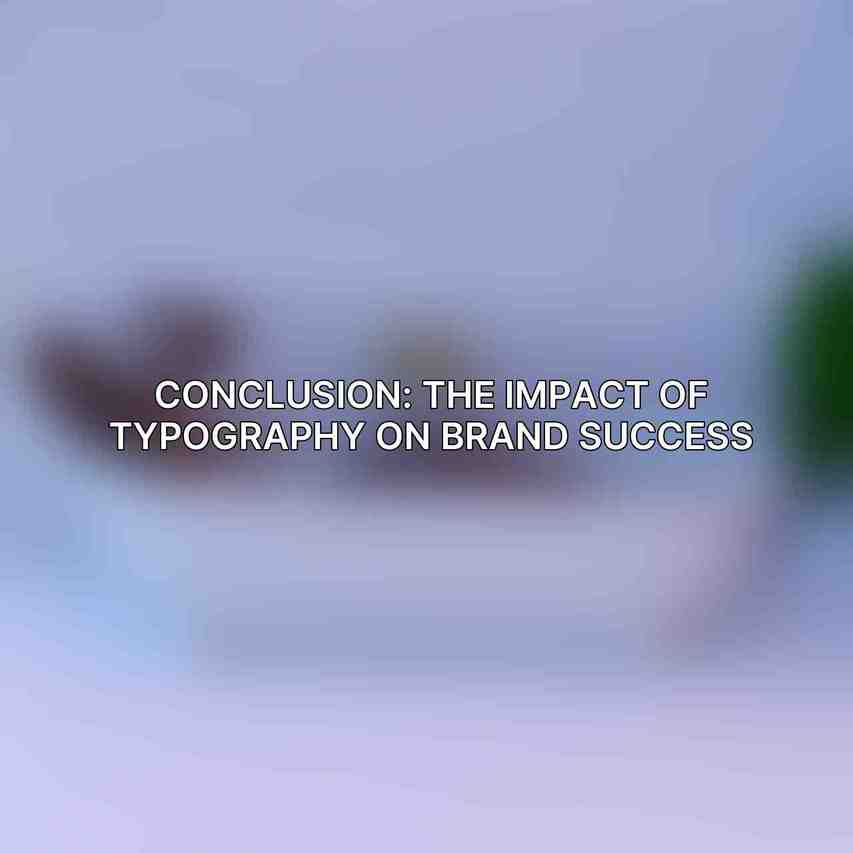Typography plays a pivotal role in the visual representation of a brand. The fonts chosen can convey specific messages, evoke emotions, and shape how a brand is perceived by its audience. Typography is not just about selecting pretty fonts; it is about building an identity that resonates with consumers.
Typographic choices are crucial in establishing a brand’s personality and creating a connection with the target audience. The consistency of typography across various brand materials helps in building recognition and loyalty. Looking back at history, we can see numerous examples of how effective typographic branding has left a lasting impression on consumers.
Understanding Typography Essentials
When delving into typography essentials, it is essential to comprehend the components that make up a typeface. Font families, styles, and weights all contribute to the overall look of text. Typeface classification classifies fonts into serif, sans-serif, and display fonts, each serving different purposes. Additionally, legibility, readability, and visual hierarchy are critical aspects to consider for effective communication.
An in-depth understanding of these essentials allows brands to make informed decisions when choosing fonts that align with their message and target audience. By mastering the fundamentals of typography, brands can ensure that their visual identity is consistent and engaging.
Choosing Fonts for Your Brand

Selecting the right fonts for your brand involves more than just picking what looks appealing. It requires a deep understanding of your brand’s personality and values to ensure alignment. Moreover, considering the target audience and the message you aim to convey is vital in making font choices that resonate with your consumers.
Establishing a typographic system that includes font pairing, size variations, and spacing guidelines can further enhance brand consistency. This system ensures that all brand materials maintain a cohesive look and feel, reinforcing brand identity at every touchpoint.
Best Practices in Typographic Branding
Maintaining consistency and cohesiveness in typographic choices across all brand touchpoints is key to establishing a strong brand identity. However, it is also crucial for brands to experiment and innovate within the boundaries of their established guidelines to stay relevant and fresh.
Adhering to best practices involves avoiding common pitfalls such as using too many fonts, pairing incompatible typefaces, and compromising legibility. By following these practices, brands can effectively leverage typography to strengthen their brand identity.
Typography Trends and Innovations
The world of typography is ever-evolving, with new trends and innovations shaping how brands communicate visually. The emergence of variable fonts offers flexibility and adaptability in design, allowing for seamless adjustments across different platforms and devices.
Experimental typography pushes the boundaries of legibility, challenging traditional norms to create unique and engaging visuals. Digital typography focuses on optimizing fonts for web and mobile experiences, ensuring readability and brand consistency across various digital touchpoints.
Case Studies: Typography in Iconic Brands
Examining how iconic brands utilize typography can provide valuable insights into effective typographic branding strategies. Coca-Cola‘s use of the Spencerian script exudes a sense of timelessness and nostalgia, resonating with consumers worldwide. Apple‘s minimalist approach and use of Helvetica reflect simplicity and elegance, embodying the brand’s design ethos.
Similarly, Nike‘s iconic Swoosh combined with the Futura typeface conveys athleticism and style, reinforcing the brand’s positioning in the sports industry. These case studies demonstrate how typography can play a significant role in shaping brand perception and recognition.
Conclusion: The Impact of Typography on Brand Success

typography serves as a vital tool for brands to differentiate themselves in a crowded marketplace and leave a lasting impression on consumers. The careful selection and application of fonts can significantly impact brand success, influencing how a brand is perceived and remembered.
As brands continue to evolve and adapt to changing consumer preferences, ongoing typographic evolution is essential to staying relevant and engaging. By integrating effective typography into their branding strategies, brands can create memorable experiences for their audience and build strong connections that endure over time.
Remember, as you embark on your typographic journey, consider these tips for effective integration of typography in your branding:
- Stay consistent with your typographic choices
- Understand your audience and tailor fonts accordingly
- Experiment within your brand guidelines
- Prioritize readability and legibility
- Embrace innovation while respecting brand identity
By following these guidelines, brands can harness the power of typography to strengthen their brand identity and achieve long-term success.
Frequently Asked Questions
What is typography?
Typography is the art and technique of arranging type to make written language legible, readable, and appealing when displayed.
How does typography impact brand identity?
Typography plays a crucial role in defining a brand’s personality, values, and overall visual identity by conveying emotions, communicating the brand message, and establishing recognition.
What are some popular typography styles for branding?
Some popular typography styles include serif, sans-serif, script, and display fonts, each of which conveys a different mood and aesthetic for a brand.
How can I choose the right typography for my brand?
When choosing typography for your brand, consider factors such as legibility, scalability, alignment with brand values, and consistency across different marketing materials.
Can I use multiple typography styles for my brand identity?
While it’s possible to combine multiple typography styles, it’s important to maintain visual harmony and coherence to ensure a consistent brand image.

